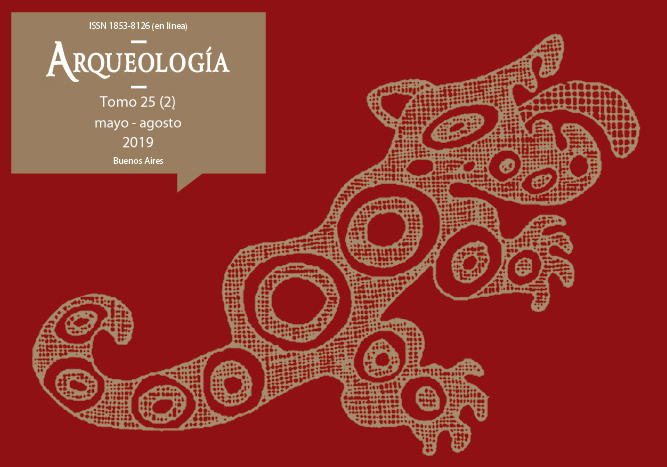Variaciones y continuidades: el uso de los recursos faunísticos en asentamientos indígenas del siglo XX en el centro-oeste de Santa Cruz
Palabras clave:
Arqueología del siglo XX, Grupos indígenas, Pastoralismo, Marginalidad, Silencio histórico
Resumen
En este trabajo se propone un abordaje a las estrategias de uso de los recursos por parte de grupos familiares de origen indígena que habitaron la meseta del Strobel (Santa Cruz) durante el siglo XX. Dichos grupos se instalaron en la región evitando su incorporación a las reservas indígenas dispuestas por el Estado nacional. Como parte de la ocupación de este espacio, dichas unidades familiares implementaron diversas estrategias económicas, marcadas por el acomodamiento y reajuste ante el avance de la economía pastoril y la pérdida de tierras. Se concluye que las estrategias adoptadas se caracterizaron por su diversidad y exibilidad, combinando prácticas tradicionales con aquellas vinculadas al nuevo lugar que estos grupos adquirieron en la economía. A pesar de ello, la aparición de nuevas legislaciones y el progresivo arrinconamiento de los grupos locales llevaron al abandono de la meseta por parte de éstos.Descargas
La descarga de datos todavía no está disponible.
Publicado
2019-06-01
Cómo citar
Agnolin, A. M. (2019). Variaciones y continuidades: el uso de los recursos faunísticos en asentamientos indígenas del siglo XX en el centro-oeste de Santa Cruz. Arqueología, 25(2), 117-140. https://doi.org/10.34096/arqueologia.t25.n2.6859
Sección
Artículos
Derechos de autor 2019 Agustín M. Agnolin

Esta obra está bajo licencia internacional Creative Commons Reconocimiento-NoComercial-CompartirIgual 4.0.
Los autores/as que publiquen en esta revista aceptan las siguientes condiciones:
- Los autores/as conservan los derechos de autor y ceden a la revista el derecho de la primera publicación, con el trabajo registrado mediante Licencia Creative Commons 4.0 Internacional (CC-BY-NC-SA), que permite a terceros utilizar lo publicado siempre que mencionen la autoría del trabajo y a la primera publicación en esta revista.
- Los autores/as pueden realizar otros acuerdos contractuales independientes y adicionales para la distribución no exclusiva de la versión del artículo publicado en esta revista (p.e. incluirlo en un repositorio institucional o publicarlo en un libro) siempre que indiquen claramente que el trabajo se publicó por primera vez en esta revista.
- Se permite y recomienda a los autores/as a publicar su trabajo en Internet (p.e. en sus sitios web personales o en depósitos institucionales), tanto antes como después de su publicación en esta revista, siempre y cuando proporcionen información bibliográfica que acredite, si procede, su publicación en ella. De esta manera, pueden favorecerse intercambios productivos y a una mayor y más rápida difusión del trabajo publicado (vea The Effect of Open Access).



.png)

(1)13.png)






1.jpg)
1.png)
1.jpg)


13.png)
1.png)


(1)1.png)









